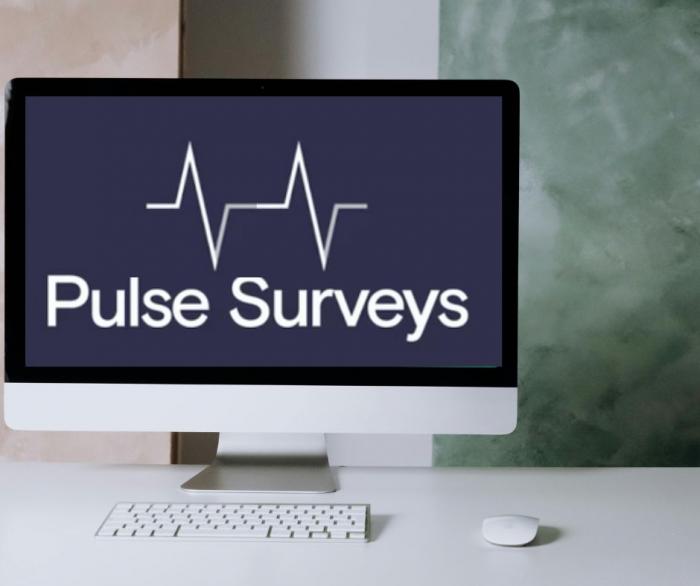Stop Using Outdated Market Research Surveys: Here's How to Upgrade
 As a business owner or marketer, conducting market research is one of the most powerful tools at your disposal. It helps you understand your target audience, gauge customer satisfaction, and stay ahead of competitors. But how do you know when your market research surveys are no longer effective? Surveys that are outdated or irrelevant can mislead your strategies, wasting both time and resources. In a rapidly changing market, you need to ensure that your surveys reflect the most current trends, consumer behaviors, and market dynamics. If your surveys aren’t aligned with the present reality, you could be making decisions based on inaccurate or irrelevant data.
As a business owner or marketer, conducting market research is one of the most powerful tools at your disposal. It helps you understand your target audience, gauge customer satisfaction, and stay ahead of competitors. But how do you know when your market research surveys are no longer effective? Surveys that are outdated or irrelevant can mislead your strategies, wasting both time and resources. In a rapidly changing market, you need to ensure that your surveys reflect the most current trends, consumer behaviors, and market dynamics. If your surveys aren’t aligned with the present reality, you could be making decisions based on inaccurate or irrelevant data.
In this blog, we'll explore how to tell if your market research surveys are outdated and provide actionable steps to upgrade them, so you can continue gathering accurate, valuable insights for your business.
Industry Indicators of an Outdated Market Research Survey
When a market research survey becomes outdated, the data it provides can be skewed or irrelevant. Keeping your surveys up-to-date ensures you’re capturing the most accurate and actionable information. Let’s walk through some clear signs that it’s time to refresh your surveys.
Changes in Consumer Behavior
Consumer behavior is constantly evolving. With new technologies, shifting societal norms, and changing economic landscapes, what people want today might be completely different from what they wanted last year or even last month. If your survey fails to reflect these changes, your results might no longer be accurate. For instance, consider how much more consumers are relying on online shopping today compared to just a decade ago. This shift in buying behavior could mean that questions about in-store experiences in your survey are now less relevant.
For example, imagine you run a fashion brand, and your surveys still ask questions about physical store layouts and in-store customer service satisfaction. While these were once valuable insights, if your customers are now shopping mostly online, those questions are no longer the most important. Updating your survey to reflect current shopping habits, such as questions about website usability or delivery experience, will provide more valuable insights and align your research with today’s consumer behavior.
Market or Industry Shifts
The business landscape is ever-changing, and what worked last year may no longer be the best approach today. New competitors, shifting regulations, or even a change in consumer sentiment can all impact how the market functions. If your survey doesn’t take these shifts into account, the data it gathers might be outdated.
Take, for instance, the rise of sustainability in consumer preferences. If your surveys were designed five years ago and didn’t include questions about sustainability, you might miss out on valuable feedback. A company that ignored this growing trend might find that their customer base becomes less engaged as sustainability becomes a major purchasing factor. To keep your survey relevant, it’s essential to account for these market shifts, whether it’s changing regulations, new industry standards, or new players entering the market.
Obsolete Questions or Response Options
Over time, the questions you ask and the response options you offer may become obsolete. This is especially true if the market or your business has evolved. If the questions in your survey no longer align with your business objectives or the reality of your audience, it’s a clear sign that an update is needed.
For example, if your company once focused on a specific product category and has since expanded to multiple categories, you might have survey questions that no longer apply to all customers. An outdated question like, "How often do you purchase our flagship product?" might need to be updated to ask, "How often do you purchase from our range of products?" Also, if your surveys offer limited or irrelevant response options, it could hinder the quality of feedback you receive. Providing options that reflect current customer expectations—such as including more specific choices or even an “Other” option—can help you gather more accurate data.
Decline in Response Rates or Engagement
If you’ve noticed that fewer people are filling out your surveys or that engagement rates are dropping, it could be an indicator that your survey is outdated. People might no longer be interested in answering questions that don’t seem relevant to their current experiences. Respondent fatigue is a real issue; if your questions feel repetitive or irrelevant, people may simply stop participating.
Consider a company that has been sending the same market research survey for several years without any major changes. Over time, respondents might start feeling that there’s no new value in completing the survey. They might stop responding altogether, or they might rush through the questions without giving thoughtful answers. If you see a noticeable decline in engagement or response rates, this could be a sign that your survey is no longer aligned with your audience’s interests or needs.
Technological Advancements
In today’s world, technology evolves at a rapid pace. New tools, platforms, and data analysis techniques can change how surveys are designed and how the data is interpreted. If your surveys are built using outdated technologies, or if they don’t take advantage of the latest advancements in data collection and analysis, they could be falling behind.
For example, the rise of mobile devices has made it crucial for surveys to be mobile-friendly. If your survey is not optimized for mobile users, you could be losing out on a significant portion of respondents. Additionally, more advanced analytics tools are available today that can provide deeper insights from the data you collect. Using outdated survey platforms or tools that don’t integrate with modern data analysis systems could mean you’re missing opportunities to gain richer insights from your market research.
Feedback from Survey Participants
One of the most direct ways to know if your market research survey is outdated is through feedback from the people filling it out. If respondents are telling you that your survey feels old-fashioned, irrelevant, or too long, it's a clear indication that an update is needed. Pay attention to comments or suggestions from survey participants, as they can often highlight areas for improvement that you may not have noticed.
For example, if respondents frequently comment that the questions are outdated or hard to relate to, it’s time to revisit your survey design. This kind of feedback is invaluable because it comes directly from your audience, and it gives you insight into what’s working and what’s not. By acting on this feedback, you can create a more engaging and relevant survey that better meets the needs of your target audience.
How to Upgrade Your Market Research Survey
Upgrading your market research survey is not just about fixing what’s broken; it’s about ensuring that you’re continuously gathering data that is valuable and relevant. Here are some actionable steps you can take to upgrade your surveys.
Review and Update Survey Questions
The first step in upgrading your survey is to revisit your questions. Are they still aligned with your current business goals and the needs of your target audience? Take the time to review each question and determine if it’s still relevant. If you find that some questions are outdated or no longer provide useful insights, it’s time to revise or replace them.
For instance, if you previously focused on customer satisfaction with a specific product, but you’ve since expanded your offerings, you may want to ask questions about customer satisfaction with your broader product range. You might also consider adding new questions that address current trends, such as customer perceptions of sustainability or their thoughts on new features you’re offering. Updating your questions ensures that you’re gathering data that is aligned with your business’s current objectives.
Incorporate New Research Methodologies
As the market changes, so do research methodologies. It’s important to stay on top of the latest techniques and tools that can enhance the quality of your survey data. This might mean incorporating more advanced methodologies, such as behavioral surveys or sentiment analysis, to capture more nuanced insights from your audience.
For example, sentiment analysis can help you understand how customers feel about your brand or product, beyond just what they think. By analyzing customer emotions, you can gain deeper insights into their motivations and pain points. Additionally, behavioral surveys that track how users interact with your website or products can provide valuable data that a traditional survey might miss.
Utilize the Right Survey Tools
One of the easiest ways to upgrade your survey is by using the right tools. Modern survey platforms offer advanced features like automation, integration with other tools, and enhanced analytics capabilities. By choosing a survey tool that meets your needs, you can streamline your survey process and improve the quality of the data you collect.
Look for survey platforms that are user-friendly, mobile-optimized, and offer robust reporting features. For example, you might want to use a platform that can automatically send follow-up surveys based on specific triggers, like after a customer completes a purchase. This type of automation can help you collect more relevant data and reduce the time and effort required to manage your surveys.
Test and Optimize
Survey optimization is an ongoing process. After you’ve made changes to your survey, it’s important to test it to ensure that it’s producing the results you need. A/B testing is a great way to determine which questions, response options, or survey formats work best for your audience.
For example, you might test different versions of a survey to see which one yields the highest response rate or the most actionable insights. By continuously testing and optimizing your surveys, you can ensure that they’re always producing high-quality data that aligns with your business goals.
Monitor Industry Trends
Finally, staying updated with industry trends is crucial for keeping your surveys relevant. Regularly review industry reports, competitor surveys, and consumer behavior studies to ensure that your survey questions and methodology are aligned with current market dynamics.
For instance, if your industry sees a major shift in technology, such as the introduction of artificial intelligence or automation, you may need to update your survey to reflect how these changes impact your customers. Monitoring industry trends ensures that your surveys remain timely and valuable.
Conclusion
An outdated market research survey can lead to poor decision-making and missed opportunities. By recognizing the signs of an outdated survey and taking steps to upgrade it, you can ensure that you’re always collecting valuable, relevant insights. Whether it’s updating your questions, incorporating new research methodologies, or using the right survey tools, keeping your surveys fresh and aligned with current market conditions is key to staying competitive. Regularly reviewing and upgrading your surveys ensures that you’re always in tune with your audience’s needs and can make informed decisions that drive your business forward.


